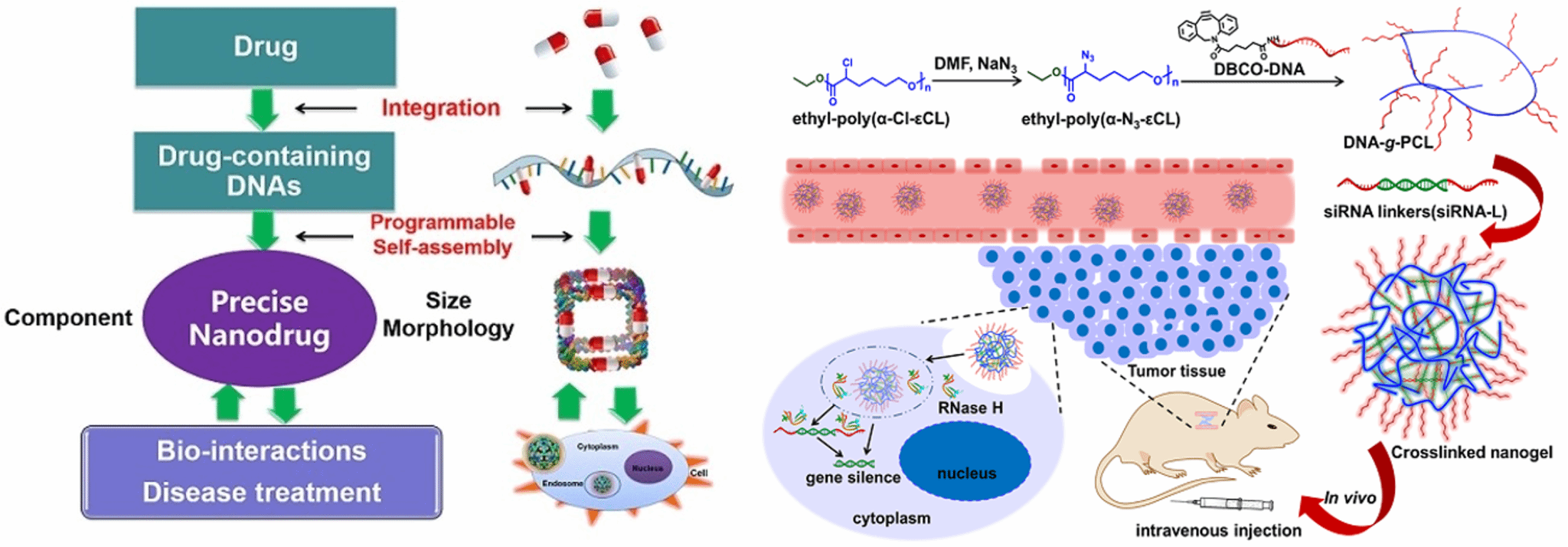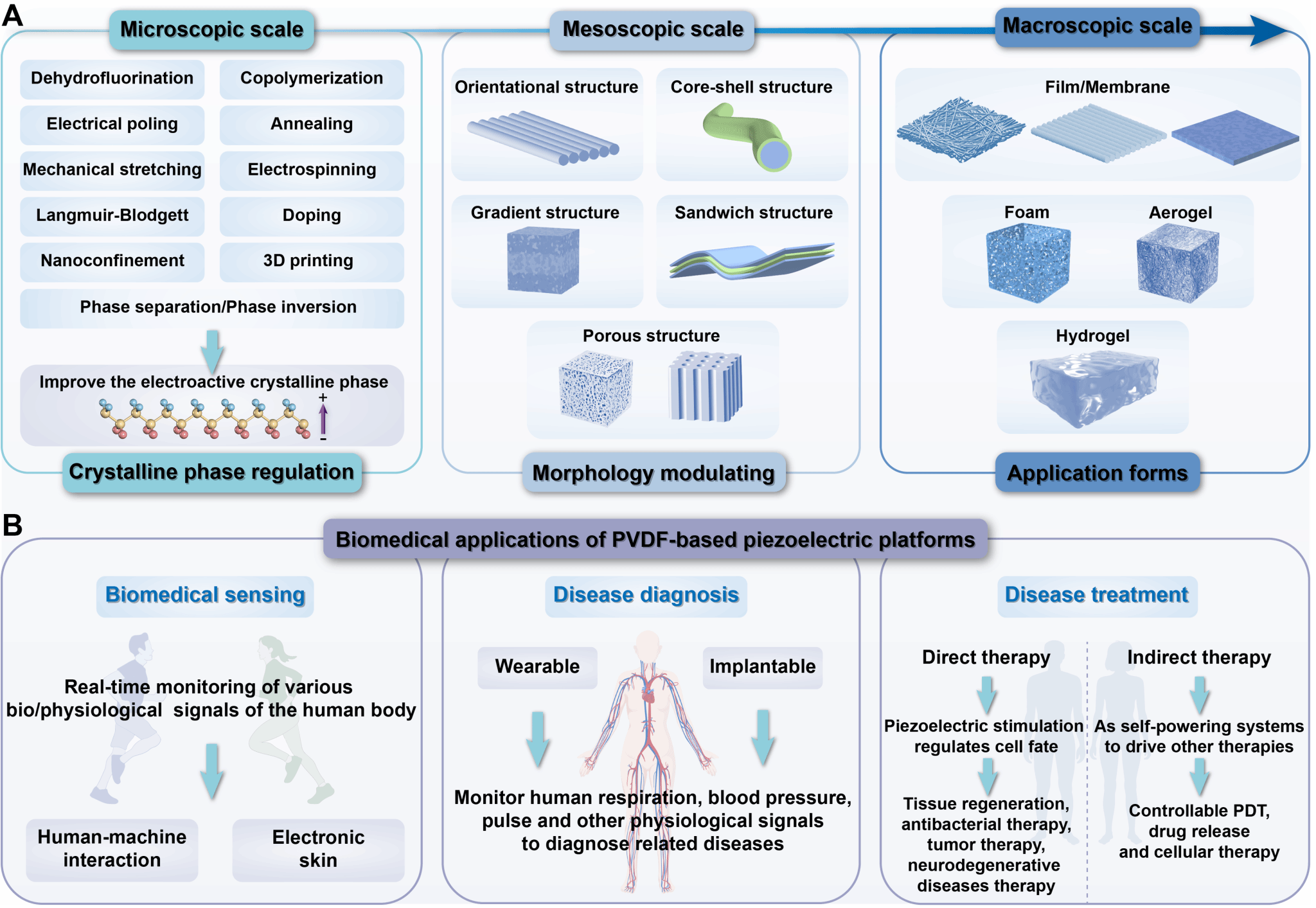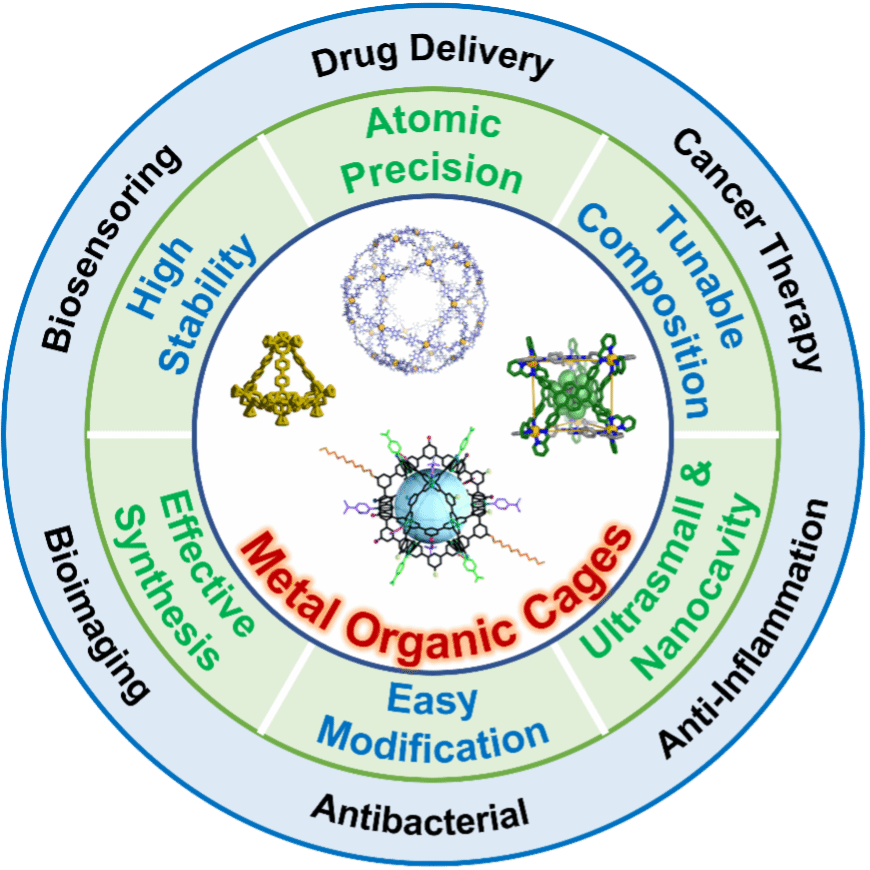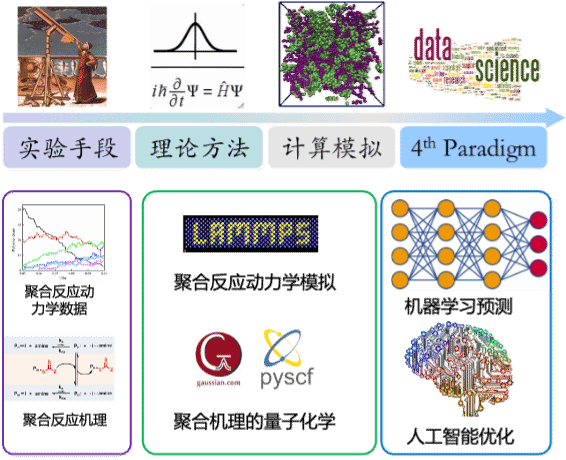OVERVIEW
The research team led by Prof. Xinyuan Zhu in Shanghai Jiaotong University has 12 faculty members, is committed to the basic research of polymer discipline and the industrial application of polymers. The research covers polymer chemistry, hydrogel materials, medical polymers, nucleic acid drugs, hyperbranched polymers, and the development and research of new polymer materials.
1. Polymer chemistry and polymerization reaction methods. Multimechanism polymerization is an important extension of traditional single mechanism polymerization reactions, which can design and synthesize various polymers with complex topological structures and chain sequences, as well as functional polymer materials. It is very challenging to accurately and comprehensively describe the impact of multiple reaction mechanisms. Our research group has recently shown that the influence between polymerization mechanisms can be described by the evaluation of reaction kinetics and thermodynamics. By comparing the kinetic and thermodynamic behavior of each mechanism in a multicomponent polymerization system, the effects between the participating mechanisms are quantitatively calculated using the proposed kinetic models. On this basis, we constructed a mathematical model for the kinetics of multicomponent polymerization reactions, which can estimate and calculate the strength of mutual interactions between mechanisms through hybrid functions (hybrid parameters), thereby quantitatively studying the complex interactions of multicomponent polymerization reactions.

2. DNA nanotechnology, Supramolecular self-assembly, Exosome, and the Engineered Nanomaterials for biomedical applications, including:
1) nucleoside analogue based nanomedicine. Based on the structural similarity, herein, nucleoside analogue therapeutics were integrated into DNA strands through conventional solid-phase synthesis. By elaborately designing their sequences, drug-integrated DNA strands were synthesized and self-assembled into well-defined DNA nanostructures with definite drug loading ratio as well as tunable size and morphology. As a novel drug delivery system, these drug-containing DNA nanostructures could ideally mimic the Trojan Horses to deliver chemotherapeutics into tumor cells and fight against cancer.
2) DNA nanostructure based biomacromolecule delivery system. In contrast to conventional cationic carrier based delivery strategies, functional nucleic acids are employed as cross-linkers to direct the self-assembly of DNA-polymer conjugates to form spherical and nanosized hydrogels via nucleic acid hybridization, in which the functional nucleic acids are fully embedded and protected for systemic delivery. Owing to the existence of multivalent mutual crosslinking events inside, the crosslinked nanogels with tunable size exhibit not only good thermostability, but also remarkable physiological stability that can resist the enzymatic degradation. As a novel delivery system with spherical nucleic acid (SNA) architecture, the crosslinked nanogels can assist the delivery the functional nucleic acids into different cells without any transfection agents and achieve the gene silencing effectively both in vitro and in vivo, through which a significant inhibition of tumor growth is realized in the anticancer treatment.

3. Intelligent gel materials and intelligent diagnosis and treatment. Intelligent gel materials are polymer based materials with special structures or functions, which are constructed by using biological macromolecules or special polymers. In this direction, the application technology development of these materials in wearable detection equipment, skin and hair drug delivery will also be carried out. Specifically, it includes:
1) Nano gel. Study the new technology of nano gel synthesis (seed lotion polymerization, in-situ polymerization, etc.); Constructing nano gel with multilayer composite shells; Study the structure activity relationship between the material properties (size, surface properties, micromechanical properties, etc.) of nano gel and the functions of biocatalysis, bioelectrical signal transmission, skin permeability, etc; Develop novel biological signal detection technologies for wearable glucose detection, uric acid detection, lactate detection, etc; Develop efficient transdermal drug delivery technology for the treatment of skin diseases such as vitiligo.
2) Piezoelectric gel. Study the structure-activity relationship of PVDF based piezoelectric materials, including molecular structure and material structure; To explore the construction strategy of PVDF piezoelectric gel, and study the influence of novel micro nano structure on piezoelectric properties; Develop the application of PVDF piezoelectric gel in wearable devices.

4. Precise nanomedicine based on metal organic cages. Nanomedicine has made significant progress, but the vast majority of existing nanosystems have unclear structures, making it difficult to conduct structure-activity relationship research and controllable batch preparation, posing challenges for further clinical translation. Therefore, precision medicine based on precise nano systems is receiving increasing attention. We use metal organic cages with atomic level precision to construct precise nanomedicine systems. Metal organic cages are nano polyhedral structures formed by coordination assembly of metal ions or clusters with organic ligands. They have the characteristics of precise structure, diverse components and structures, ultra small size and cavities, easy modification, efficient preparation, and stable structure. They are ideal precision nanomedicine systems and have been widely used in biological imaging, sensing, anti-cancer, anti-inflammatory, antibacterial and other research.

5. Polymer simulation and computational chemistry. Polymer simulation and computational chemistry is to study the structure, properties, and behavior of polymer materials using simulation calculations. By modeling and theoretical calculations of polymer systems, the relationship between the microscopic molecular behavior and macro material properties of polymer materials is revealed. This project aims to comprehensively use various simulation and computational chemistry methods, including molecular dynamics, quantum chemistry calculations, density functional theory, numerical simulations, etc., to study the physical and chemical properties of polymers, such as polymerization reaction kinetics, polymer condensed phases, phase transition of liquid crystal polymers, and mechanical properties of complex polymers. With the rise of AI technology, we have also made further attempts in AI for Polymers, including machine learning of polymerization reaction kinetics (Kinformer) and machine learning potential energy combined with molecular dynamics method of DFT (DFT-ML/MD)

The research team has also achieved important results in the industrial applications of polymers and polymer materials. Multiple scientific research achievements and patents have been successfully applied in large-scale industrialization, achieving significant economic benefits.









